Recent Progress of Biomaterial-Based Hydrogels for Wearable and Implantable Bioelectronics
- PMID: 40558741
- PMCID: PMC12192074
- DOI: 10.3390/gels11060442
Recent Progress of Biomaterial-Based Hydrogels for Wearable and Implantable Bioelectronics
Abstract
Bioelectronics for wearable and implantable biomedical devices has attracted significant attention due to its potential for continuous health monitoring, early disease diagnosis, and real-time therapeutic interventions. Among the various materials explored for bioelectronic applications, hydrogels derived from natural biopolymers have emerged as highly promising candidates, owing to their inherent biocompatibility, mechanical compliance akin to biological tissues, and tunable structural properties. This review provides a comprehensive overview of recent advancements in the design and application of protein-based hydrogels, including gelatin, collagen, silk fibroin, and gluten, as well as carbohydrate-based hydrogels such as chitosan, cellulose, alginate, and starch. Particular emphasis is placed on elucidating their intrinsic material characteristics, modification strategies to improve electrical and mechanical performance, and their applicability for bioelectronic interfaces. The review further explores their diverse applications in physiological and biochemical signal sensing, bioelectric signal recording, and electrical stimulation. Finally, current challenges and future perspectives are discussed to guide the ongoing innovation of hydrogel-based systems for next-generation bioelectronic technologies.
Keywords: bioelectronics; biomaterials; hydrogel; implantable; wearable.
Conflict of interest statement
The authors declare no conflicts of interest.
Figures


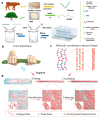
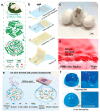


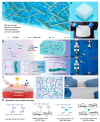
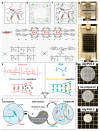
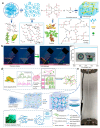




Similar articles
-
Advancements in Hydrogels: A Comprehensive Review of Natural and Synthetic Innovations for Biomedical Applications.Polymers (Basel). 2025 Jul 24;17(15):2026. doi: 10.3390/polym17152026. Polymers (Basel). 2025. PMID: 40808075 Free PMC article. Review.
-
Cellulose-based Conductive Materials for Bioelectronics.ChemSusChem. 2025 Mar 15;18(6):e202401762. doi: 10.1002/cssc.202401762. Epub 2024 Nov 15. ChemSusChem. 2025. PMID: 39462209 Review.
-
Wearable Hydrogels for Personal Protection Applications.Macromol Rapid Commun. 2025 Jul;46(14):e2400960. doi: 10.1002/marc.202400960. Epub 2025 Mar 26. Macromol Rapid Commun. 2025. PMID: 40135549 Review.
-
In situ formed hydrogels for soft bioelectronics.Mater Horiz. 2025 Sep 1. doi: 10.1039/d5mh01356a. Online ahead of print. Mater Horiz. 2025. PMID: 40888314 Review.
-
Synergistic mastery: Advancing mechanical and electrical harmony in conducting polymer hydrogel bioelectronics.Bioact Mater. 2025 Jun 11;52:300-317. doi: 10.1016/j.bioactmat.2025.06.015. eCollection 2025 Oct. Bioact Mater. 2025. PMID: 40575329 Free PMC article.
Cited by
-
Controlled Fabrication of pH-Visualised Silk Fibroin-Sericin Dual-Network Hydrogels for Urine Detection in Diapers.Gels. 2025 Aug 21;11(8):671. doi: 10.3390/gels11080671. Gels. 2025. PMID: 40868801 Free PMC article.
References
-
- Lu Y., Yang G., Wang S., Zhang Y., Jian Y., He L., Yu T., Luo H., Kong D., Xianyu Y., et al. Stretchable graphene–hydrogel interfaces for wearable and implantable bioelectronics. Nat. Electron. 2023;7:51. doi: 10.1038/s41928-023-01091-y. - DOI
Publication types
Grants and funding
LinkOut - more resources
Full Text Sources

